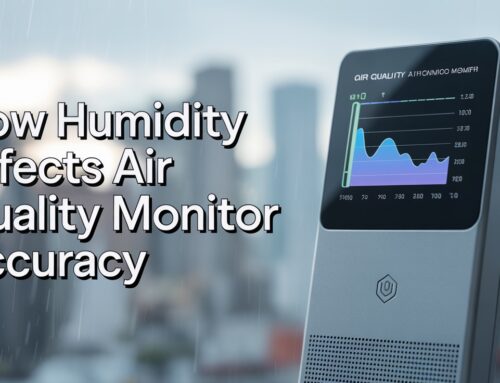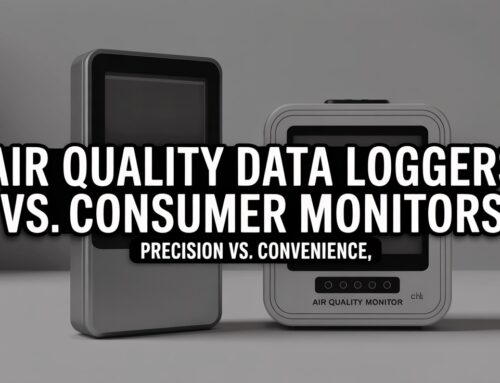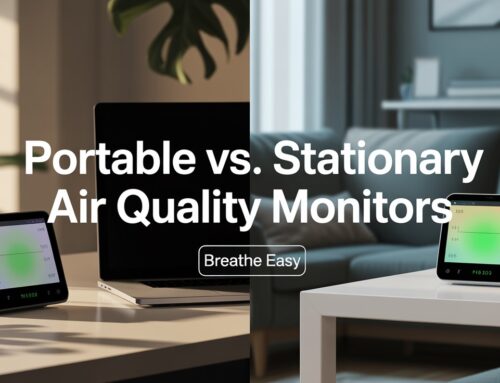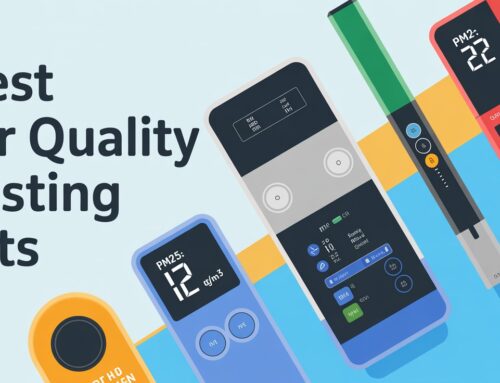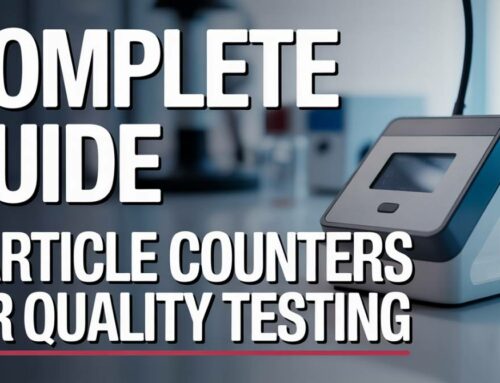July 22, 2025
Best VOC Sensors and Detectors: Complete Buying Guide
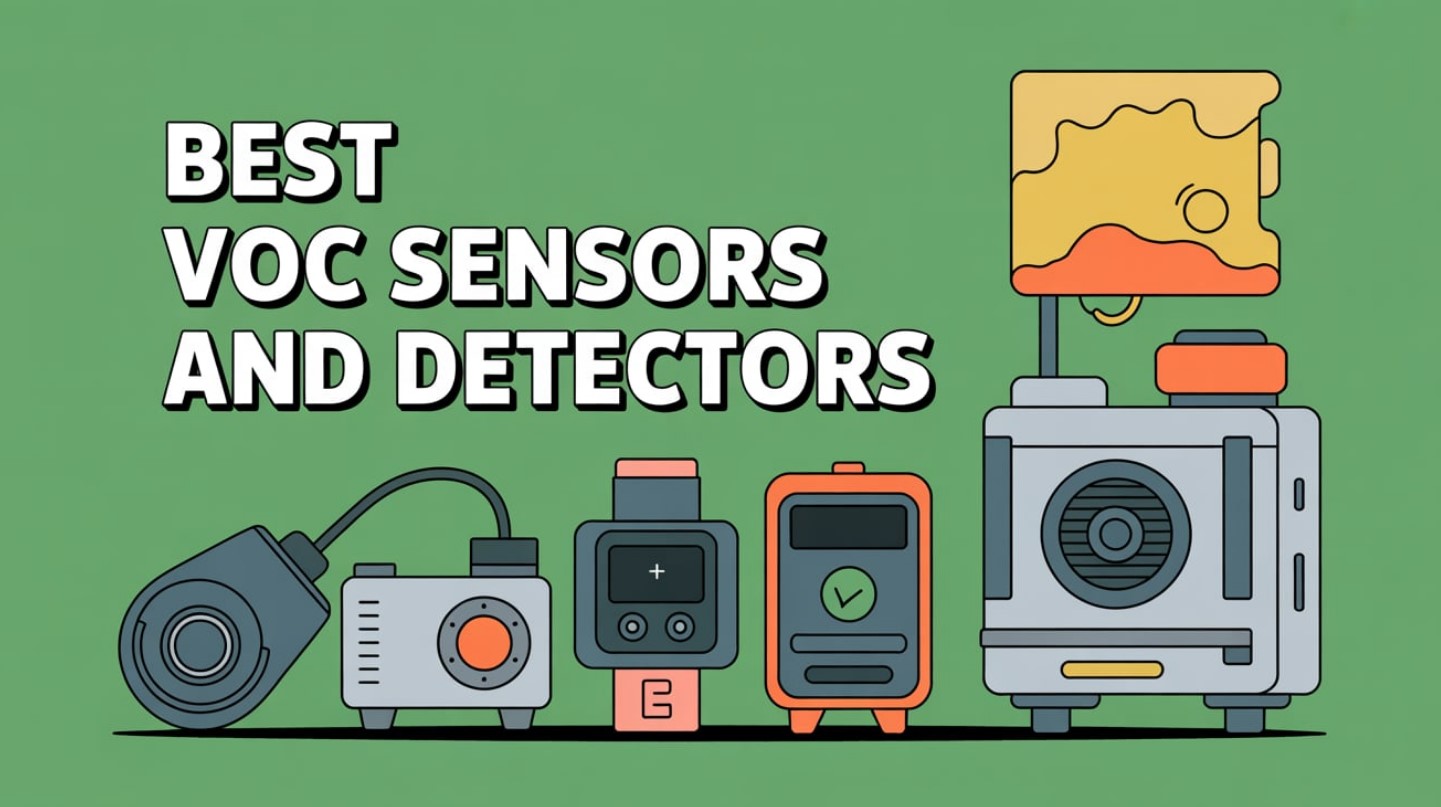
Your home should be your safe space. Yet invisible chemicals called volatile organic compounds (VOCs) might be putting your family’s health at risk right now. These sneaky pollutants come from everyday items like paint, furniture, and cleaning products. They can cause headaches, fatigue, and worse health problems over time.
The good news? VOC sensors and detectors can spot these harmful chemicals before they make you sick. But with so many options available, how do you choose the right one? This guide breaks down everything you need to know about VOC detection technology in simple terms.
Understanding indoor air quality becomes much easier when you can actually measure what’s in your air. VOC sensors give you the data you need to make informed decisions about your home environment.
What Are VOC Sensors and Why Do You Need One?
VOC sensors are electronic devices that detect volatile organic compounds in your air. Think of them as smoke detectors, but for invisible chemical fumes. These compounds evaporate easily at room temperature, which means they quickly spread through your indoor air.
Common sources of VOCs include fresh paint, new carpets, furniture made with pressed wood, cleaning supplies, and even air fresheners. While you might smell some of these chemicals, many VOCs are odorless. This makes detection equipment essential for protecting your health.
Professional air quality experts use VOC sensors to measure chemical levels in parts per million (ppm). When VOC levels get too high, these devices trigger alerts so you can take action. Some sensors provide continuous monitoring, while others take spot measurements when you need them.
💡Quick Tip
- VOCs are measured in parts per million (ppm) – even small amounts can affect health
- Many dangerous VOCs have no smell, making sensors essential
- Professional sensors cost more but provide legally defensible measurements
- Budget sensors under $100 often give inaccurate readings
Three Main Types of VOC Sensor Technology
| Sensor Type | Detection Limit | Price Range | Best For | Accuracy |
|---|---|---|---|---|
| PID (Photoionization) | 0.001 ppm | $300-$2,000+ | Professional use | Excellent |
| Electrochemical | 0.01 ppm | $100-$500 | Home/small business | Good |
| MOS (Metal Oxide) | 1 ppm | $20-$200 | Basic awareness | Poor |
🏆PID Sensors – The Gold Standard
Use ultraviolet light to break apart VOC molecules into charged particles. Offer highest accuracy with detection as low as 0.001 ppm. Response time under 2 seconds. Cost $300-2,000+ but provide professional-grade measurements.
⚖️Electrochemical – The Practical Choice
Detect VOCs through chemical reactions creating electrical signals. Balance affordability with decent performance. Detection down to 0.01 ppm with 25-second response time. Popular for home and small business use.
💰MOS Sensors – Budget Option
Use heated metal oxide materials that change resistance when exposed to VOCs. Cheapest option starting around $20-50. Poor accuracy and humidity sensitivity make them unsuitable for serious monitoring.
✅ Professional Sensor Benefits
- NIST-traceable calibration certificates
- Legally defensible measurements
- Industrial-grade construction
- Detailed data logging capabilities
- Environmental compensation features
❌ Budget Sensor Limitations
- High cross-sensitivity to other gases
- Affected by temperature and humidity
- No calibration certificates
- Short lifespan (1-2 years)
- Poor accuracy for health decisions
Applications: Where VOC Sensors Make the Biggest Difference
🏡Indoor Air Quality Monitoring
Most people spend 90% of their time indoors. Residential air quality testing reveals surprising pollution sources. New furniture, recent painting, or cleaning products can spike VOC levels temporarily.
🏭Industrial and Commercial
Commercial air quality testing helps businesses comply with OSHA regulations. Manufacturing, printing, and auto repair facilities need continuous monitoring to protect workers.
🌍Environmental Monitoring
Environmental agencies use VOC sensor networks to track outdoor pollution. Industrial facilities must monitor emissions to comply with environmental regulations and avoid penalties.
Health Impacts and Safety Considerations
Short-Term Health Effects
VOC exposure causes immediate symptoms that many people don’t recognize as chemical-related. Headaches, dizziness, and fatigue often result from elevated VOC levels in homes or workplaces. Eye, nose, and throat irritation are also common early warning signs.
Some people are much more sensitive to VOCs than others. Children, elderly individuals, and people with respiratory conditions like asthma react to lower concentrations. Why you should get indoor air quality testing becomes clear when you understand these health connections.
Long-Term Health Risks
Chronic low-level VOC exposure poses more serious health risks than short-term exposure spikes. Some VOCs like benzene and formaldehyde are known carcinogens. Even low concentrations increase cancer risk when exposure continues over years or decades.
Liver, kidney, and nervous system damage can result from long-term exposure to certain VOCs. These effects develop gradually, making it difficult to connect health problems with specific chemical exposures. Regular air quality monitoring helps identify and reduce these risks.
🔍 Did You Know?
OSHA Workplace Standards: Benzene exposure limit is 1 ppm (8-hour average), while formaldehyde is limited to 0.75 ppm. Home exposure guidelines are typically much lower since residential exposure lasts longer than workplace exposure.
Choosing the Right VOC Sensor for Your Needs
🏠Home and Personal Use
Homeowners need sensors balancing accuracy with affordability. Signs your home needs air quality testing include persistent odors, frequent headaches, or symptoms improving when you leave the house.
💼Small Business Applications
Restaurants, salons, and retail businesses need reliable monitoring without expensive professional equipment. Mid-range sensors ($200-500) provide good accuracy while remaining budget-friendly.
🏭Industrial Requirements
Industrial applications require professional-grade sensors with certified accuracy. Fixed monitoring systems provide continuous workplace surveillance while portable units investigate specific processes.
Cost Considerations and Budget Planning
VOC sensor prices vary dramatically based on technology and features. Basic MOS sensors start around $20-50 but offer limited accuracy. Professional PID sensors cost $500-2,000+ but provide certified measurements for legal compliance.
Consider total ownership costs including calibration, maintenance, and replacement expenses. Calibration typically costs $100-300 annually per sensor. Electrochemical sensors last 2-3 years while PID sensors might last 5-7 years with proper maintenance.
Professional monitoring investments pay returns through improved health, reduced liability, and regulatory compliance. Reduced sick days and improved productivity often offset system costs in commercial applications.
Installation, Calibration, and Maintenance
Proper Sensor Placement
VOC sensor location dramatically affects measurement accuracy. Place sensors away from direct airflow sources like vents or fans. Choose locations at breathing height (4-6 feet) where people spend significant time.
Calibration and Maintenance
Professional sensors require calibration every 6-12 months using certified reference gases. PID sensors need UV lamp replacement every 1-2 years. Keep detailed maintenance records for quality assurance and regulatory compliance.
🌟 Need Professional VOC Assessment?
When DIY monitoring isn’t enough, professional analysis provides comprehensive VOC testing with legal-grade documentation. Air Quality Testing Canada brings over 15 years of experience to residential and commercial clients.
Explore Our Services🗺️ Professional VOC Testing Services Available In:
Our certified experts provide comprehensive VOC analysis throughout Ontario and Quebec, including Montreal, Ottawa, Gatineau, Kingston, Carleton Place, Brockville, Belleville, and Cornwall.
Future Trends in VOC Sensor Technology
📡Smart Sensor Networks
Wireless networks connecting multiple sensors provide comprehensive building coverage while reducing installation costs. Real-time data sharing improves response times to air quality issues.
🤖AI and Machine Learning
Advanced algorithms distinguish between different VOC sources and predict concentration spikes. This predictive capability helps prevent exposure incidents before they occur.
📱Mobile Integration
Smartphone-connected sensors provide instant air quality information. While consumer devices lack professional accuracy, they raise awareness about indoor air quality issues.
Key Takeaways for VOC Sensor Selection
Choose sensor technology based on your accuracy needs and budget constraints. PID sensors offer the best performance but cost more. Electrochemical sensors provide good value for most applications. Avoid MOS sensors unless budget is the only consideration.
Professional applications require certified accuracy and documented calibration. Don’t risk regulatory violations by using inadequate monitoring equipment. The cost of professional-grade sensors is minimal compared to potential penalties.
Remember that VOC sensors are tools to help identify air quality problems. Learn how to improve indoor air quality to get the most value from your monitoring investment.
Whether you choose DIY monitoring or professional air quality services, taking action to understand and improve your indoor air quality is an investment in health and peace of mind.
🔬 Ready to Test Your Air Quality?
Professional VOC assessment provides the expertise needed to interpret sensor data and develop effective solutions. Our certified team uses professional-grade equipment for accurate, legally defensible results.
Get Your Free Quote

